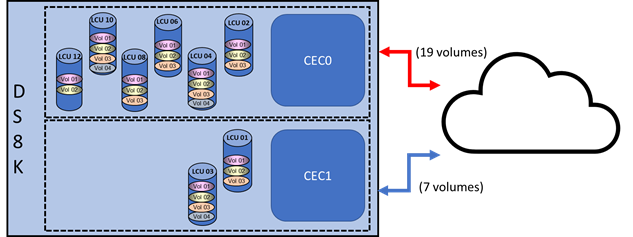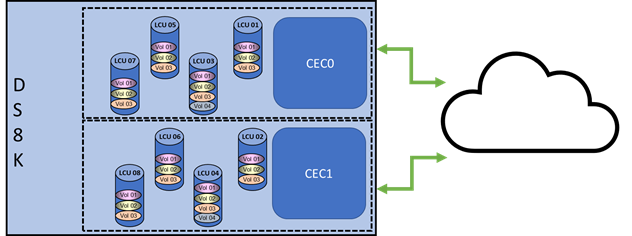Directly connecting data to the cloud is a big step in modernization. How do you maximize the value? Benefits include reducing data center costs by migrating mainframe data to cloud storage, leveraging cloud Business Intelligence, real-time analytics and artificial intelligence/machine learning tools, increasing business agility, and improving cash flow by replacing capital expenditures with consumption-based, operating expenditure offerings.
IBM has released functionality for the DS8000 called Transparent Cloud Tiering, which provides movement of archive and backup data directly to cloud storage. Removing the host from the migration allows for utilizing DFSMShsm efficiencies and saves z/OS MIPS. Options to upgrade from a 1Gigabit ethernet up to 10Gigabit can provide significant additional improvement, but at an increased cost. It’s critical to ensure that the storage environment is configured optimally.
Data volumes designated as cloud enabled utilize one of two internal storage server connections. Behind those servers, storage groups (logical control units, or LCU’s) can reside in any configuration. Too much data in one group could cause an unintended bottleneck for migrations and recalls. In order to provide the most efficient data flow to and from the cloud, volumes should be distributed evenly across both connections. If HSM monitoring shows that the migration or recall is slow, redistributing the data can resolve the issue.
IBM’s TDMF (Transparent Data Migration Facility) provides a non-disruptive data migration at the volume level. Use it to seamlessly move volumes around to allow for balance across connections, maximizing value for those upgrade expenditures.
|
Volume Placement before TDMF 
|
|
|
Balanced Volumes After TDMF Migration
|
|
|
|
To learn more about IBM Transparent Data Migration Facility (TDMF) z/OS, please contact Judy Thomas at thomasj@us.ibm.com, or visit the following website:
https://www.ibm.com/products/transparent-data-migration-facility